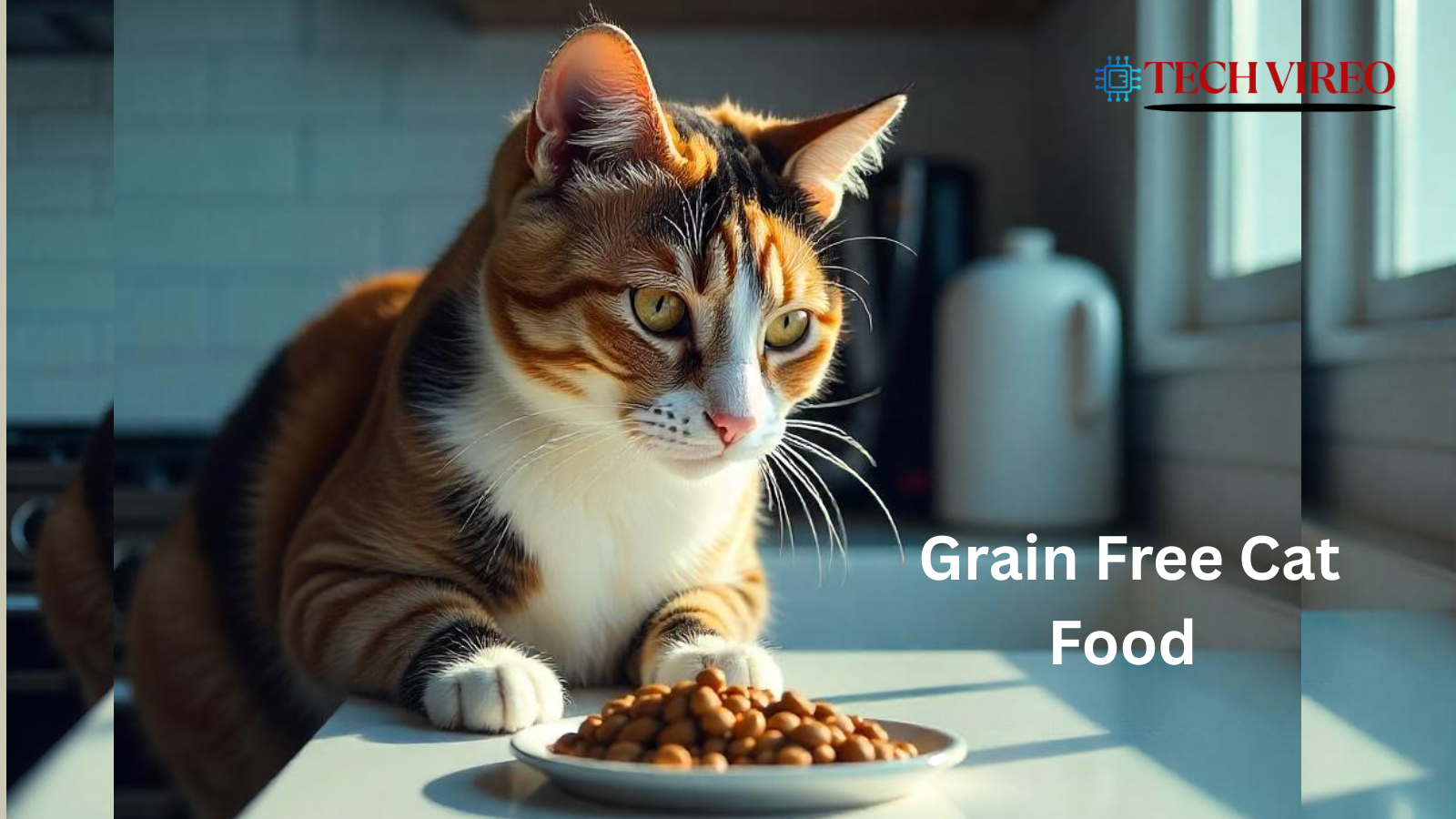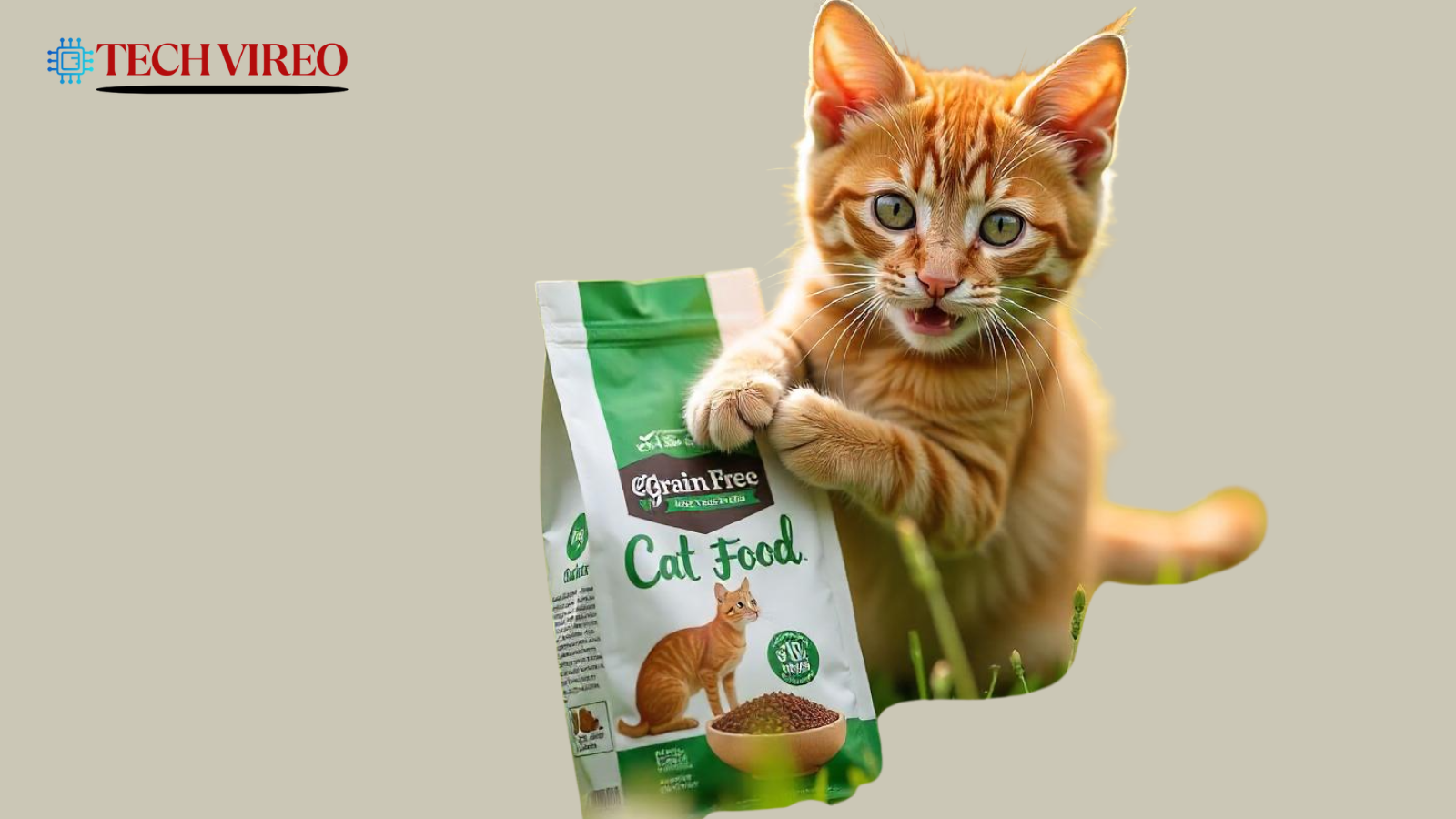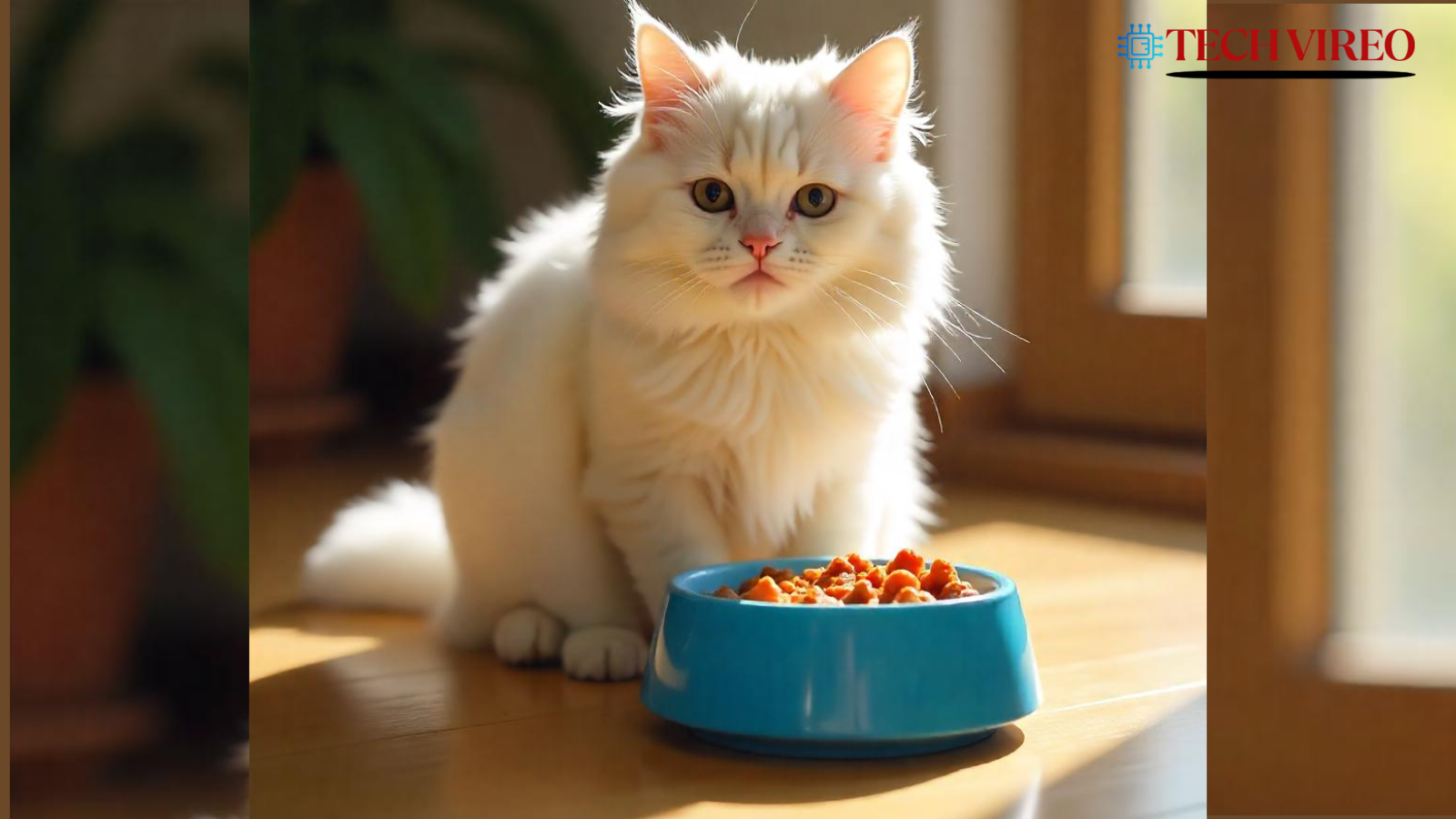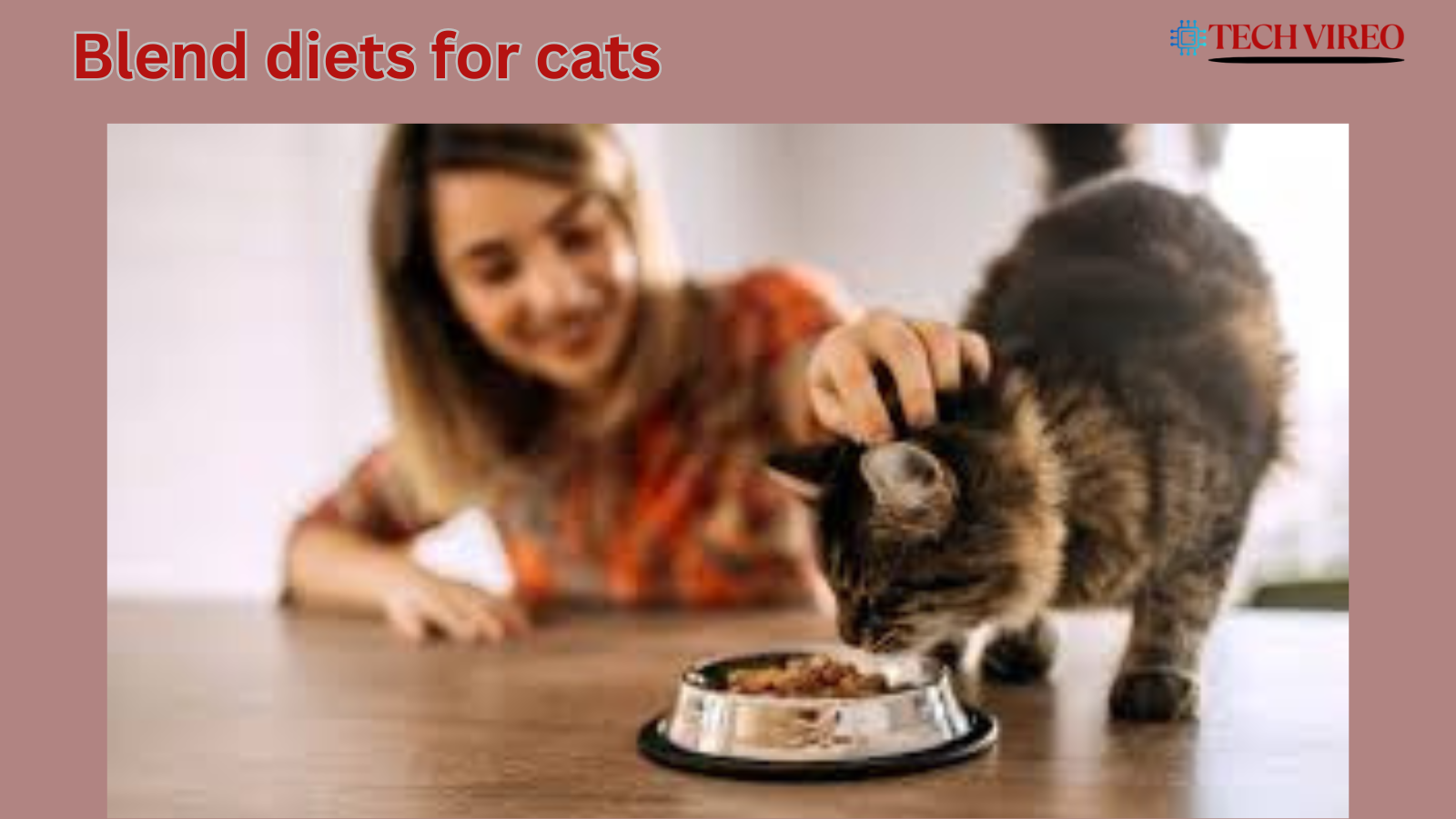Cat owners are paying closer attention to ingredients in their pets’ food, and 2025 marks a shift in what many are putting in the bowl. More people are questioning the value of grains in cat diets and turning to alternatives that focus on high quality proteins and simplified ingredients.
This guide is here to help you understand what grain free cat food actually means, why some cats might benefit from it, and whether it’s right for your pet. We’ll explore what makes a formula grain-free, discuss key ingredients, and cover both the benefits and potential concerns.
What Is Grain free cat food?
Grain free cat food is exactly what it sounds like: food that doesn’t contain common grains such as corn, wheat, barley, or rice. Instead, these diets rely on other sources for carbohydrates and fiber think sweet potatoes, peas, lentils, or chickpeas. The goal is to offer food that’s closer to what cats might eat in the wild, emphasizing animal protein and minimizing fillers.
Key Ingredients in Grain-Free Diets
Most grain-free formulas are built around meat-first ingredients like chicken meal or turkey, and often include additional sources of protein such as fish or eggs. You’ll also find key nutrients like taurine for cats’ heart and eye health, which are essential in any quality feline diet.
Why Choose Grain-Free Cat Food?
One reason many pet owners choose grain-free options is to avoid potential irritants. Cats that experience digestive discomfort or skin issues may react better to a high protein cat food that excludes grains. Grain free dry cat food, in particular, is popular for its long shelf life and convenience, especially for busy households.
Still, it’s important to note: grain-free doesn’t automatically mean healthier. The ingredient list matters. Look for real meat sources, not just “meat by-products,” and pay attention to the full nutritional profile.
Benefits of Grain-Free Cat Food
- Supports better digestion
- Reduces skin irritations or allergies
Top 7 Benefits of Grain free cat food
Switching to a grain-free diet might not be the solution for every cat, but for many, it brings noticeable improvements. Here are seven real benefits observed by pet owners and vets:
Easier Digestion
Many cats digest meat-based proteins more easily than grains. A grain-free formula made with simple, real ingredients can support smoother digestion, especially in cats with sensitive stomachs.
Allergy Reduction
Cats can be allergic to certain grains, and cutting them out has helped some pets with itchy skin, excessive grooming, or ear infections. It’s worth exploring if your cat has recurring allergy symptoms.
Shinier Coat & Skin Health
Grain-free diets often include omega-3 for cats, sourced from fish oil or flaxseed. These nutrients help reduce inflammation and support a shiny, soft coat.
Higher Energy Levels
Cats need protein to stay active and alert. High protein levels from animal sources—often found in the best grain free cat food support muscle strength and steady energy throughout the day.
Fewer Hairballs
With better digestion come fewer hairballs. Prebiotics and probiotics for pets included in some grain-free foods help move things along in the gut, reducing how often your cat coughs up hair.
Better Stool Quality
Pet owners often report more consistent, firmer stool when switching to a high-quality, hypoallergenic cat food. This can make clean-up easier and be a sign of improved gut health.
Less Risk of Bloating
Cats are obligate carnivores, meaning their bodies aren’t designed to process large amounts of carbohydrates. Avoiding grains and sticking to meat-first formulas helps reduce the chance of bloating or discomfort.
Grain-free diets also support urinary health in cats when combined with proper hydration and mineral balance. Always check with your vet before making big diet changes, but if your cat struggles with food-related issues, a grain-free diet might be worth considering.
For cats with specific medical needs, such as hyperthyroidism, check out our full guide on What Should a Hyperthyroidism in Cats Diet Include? for expert advice tailored to their condition.
Is Grain-Free Always the Best Choice?

It’s easy to assume that grain-free equals better—but that’s not always the case. This kind of food can work wonders for certain cats, but it’s not a one-size-fits-all solution. Let’s look at what vets and experts say.
The Upsides
If your cat suffers from digestive issues, itchy skin, or frequent vomiting, going grain-free might help. Removing grains can reduce exposure to ingredients that trigger food sensitivities. Grain free wet cat food, in particular, can also help maintain hydration, which supports kidney and urinary health.
The Risks
Some grain-free diets replace grains with high levels of legumes or potatoes. This can shift the nutrient balance and might not be suitable for every cat. Overuse of fillers or artificial preservatives in pet food—grain-free or not can do more harm than good.
Balanced Advice
Choose grain-free formulas that are rich in meat and low in starchy fillers. A vet-recommended cat food should be complete and balanced, whether it includes grains or not. When transitioning to new food, do it gradually over a week to prevent stomach upset. Think long-term and keep an eye on how your cat responds.
If your cat is recovering from illness or has digestive problems, you might also read What Is a Bland Diet for Cats and How Do You Prepare It?
2025’s Top-Rated Grain free cat food Brands
Choosing the right food can be overwhelming with so many options. Here’s a simplified table comparing four trusted brands based on ingredients, protein content, and ideal use cases.
| Brand | Protein Source | Features | Ideal For | Price Range |
| Josera | Poultry + Salmon | DLG-certified, no artificial additives | Hairball control, adult cats | $$ |
| Brit Care | Turkey + Chicken | Hypoallergenic, no GMOs or soy | Cats with allergies or sensitivities | $$ |
| North Paw | Chicken + Pea | Omega-3, no by-products, fresh pack tech | Active indoor cats | $$$ |
| Mera | Chicken | Grain-free kitten formula, no fillers | Young cats with sensitive digestion | $ |
All of these are considered natural grain free cat food options that focus on real ingredients. Look for products labeled as bio-appropriate diets to ensure they meet a cat’s unique nutritional needs. Avoid items that include no fillers in cat food or have unclear meat sources.
How to Switch to Grain-Free Safely
Switching your cat to a new diet isn’t something to rush. Cats can be picky, and sudden changes can upset their stomach.
Step-by-Step Transition
- Start with 25% new food and 75% current food for 2–3 days
- Move to a 50/50 mix for the next 2 days
- Increase to 75% new and 25% old for 2 more days
- Fully switch on day 7
Keep an eye out for signs of discomfort like vomiting, loose stool, or refusal to eat. If you notice issues, slow down or talk to your vet. This is especially important when introducing grain free cat food for sensitive stomach cats.
How to introduce a new diet to cat?
Gently and patiently. Some cats adapt quickly, others need more time. The goal is to avoid stressing their system during the transition.
FAQs
Is grain-free food safe for kittens?
Yes, if the food is labeled for kittens and provides complete nutrition. Grain free for kittens must include added taurine and a proper balance of protein and fat.
Is grain free cat food recommended by vets?
Many vets do recommend it—but only in specific situations. It’s not always necessary, so check with your vet before switching. Look for grain free food vet approved labels if you’re unsure.
Can grain-free be used long term?
Yes, but with proper variety and nutrient balance. Rotate protein sources and monitor your cat’s condition regularly.
How do I know if my cat is allergic to grains?
Common signs include skin irritation, frequent itching, or digestive issues. Always rule out other causes first. Watch for cat food allergy symptoms and discuss with a vet.
Conclusion
Grain free cat food can offer real benefits, especially for cats with sensitivities or digestion problems. With the right product, you can improve your cat’s health, energy, and even their coat.
Always read the ingredient list carefully and consult your vet when making a change. Whether you’re looking for more natural cat food without grains or just exploring healthier alternatives, grain-free is worth a closer look.



